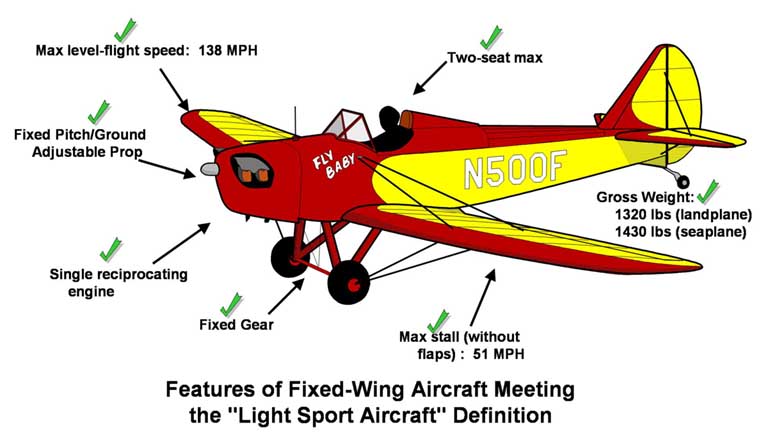
In September 2004, the FAA finally instituted the new Sport Pilot and Light Sport Aircraft regulations.
In short, the FAA has defined a new type of airplane: The Light Sport Aircraft. There are two aspects of the new regulations: The Sport Pilot license, which is the minimum rating you'll need to be able to fly these planes, and some new certification rules to allow both production and experimental Light Sport Aircraft.
The biggest feature of the new Sport Pilot license is that you no longer need an FAA medical to legally fly a Light Sport Aircraft. If you have never had a pilot's license, you can earn a Sport Pilot ticket in a minimum of 20 hours of flight time. This license will permit you to fly aircraft that meet the requirements for Light Sport. If you possess a valid driver's license, this is all the medical certification you need.
If you have a Recreational, Private, Commercial, or ATP license, must possess a valid FAA medical unless you are flying an aircraft that meets the Light Sport requirements. If the aircraft meets the LSA definition, you just have to meet the same medical requirements as a Sport Pilot...in other words, you don't need an FAA medical, just a valid driver's license.
(Note that if your last FAA medical was denied or revoked, you CANNOT use the driver's license as your medical. You must then obtain either a third class medical or a special issuance medical.)

Sharp-eyed readers will note that all requirements are met. The Fly Baby, both in the monoplane and biplane forms, easily qualifies as a Light Sport Aircraft. The only possible problem might occur is if you install a cockpit-adjustable propeller...and, offhand, I haven't heard of anyone who has done this.
In short:
Note that these two new categories do not apply to the Fly Baby. The same Experimental/Amateur-Built regulations that Fly Babies have been built under for the past 50 years are still the only ones that apply to Fly Babies.
Why? Because Experimental Light Sport aircraft designs must first be certified as Special Light Sport aircraft (e.g., production aircraft). You can't just take any design and apply for an Experimental Light Sport license. You must first build an example of the aircraft and then certify it under the consensus standards for production Light Sport planes.
And until someone does this for a Fly Baby...you won't be able to license a Fly Baby as an Experimental Light Sport aircraft. This isn't likely to happen.
But that's fine. You can still build and license Fly Babies as Experimental/Amateur-Built aircraft, and still fly them as Sport Pilots.
(Note that existing two-seat ultralights can receive certification as Experimental Light Sport aircraft without the need to certify one example. This is a transitional rule that expires in 2008. Note that if the aircraft has already been registered as an Experimental/Amateur-Built, you CANNOT convert it to ELSA).
Comments? Contact Ron Wanttaja .